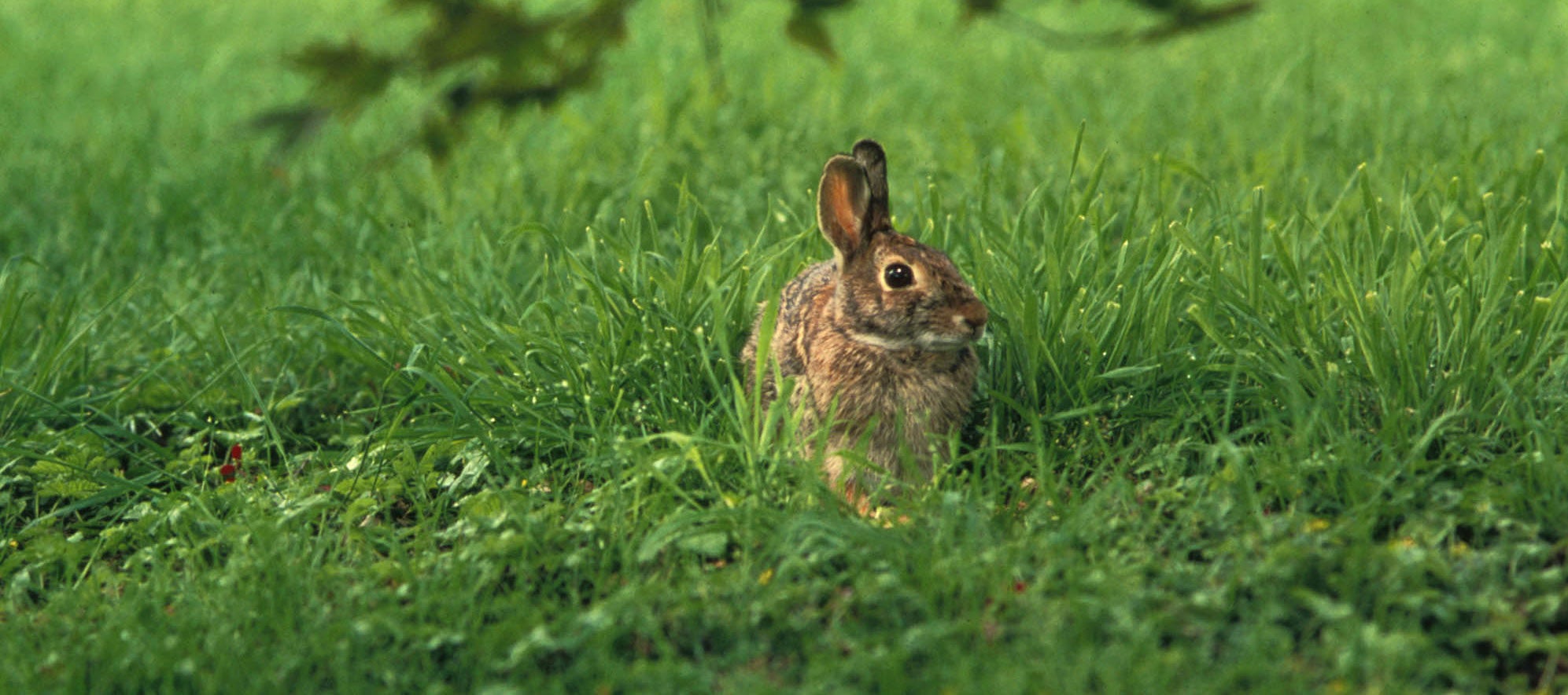By Jeremy Lowery, Wildlife Biologist
The Eastern cottontail rabbit (Sylvilagus floridanus) is one wildlife species that is familiar to almost everyone. Because of its adaptability to a variety of habitats and its reproductive capability, it is one of the most popular game species in the state. Swamp rabbits, marsh rabbits, and the New England cottontail are also found in Alabama, but the Eastern cottontail is the most abundant and widely distributed.
Habitat for cottontails varies tremendously across the state. From bottomlands and marshy lowlands to the highest ridges, rabbits thrive in any area where the habitat offers brushy areas for cover and herbaceous areas for feeding. Brushy fencerows, blackberry patches, drains and brush piles all offer good refuge and escape cover.
Feeding areas are composed of a variety of herbaceous plants including grasses, sedges, and tender sprouts. Rabbits will also consume buds, bark, twigs, and stems of woody plants when succulent vegetation is not readily available. Cottontails satisfy most of their water needs by feeding on succulent vegetation and drinking dew but will occasionally drink from surface water. Each of these habitat components must be relatively close due to the cottontail’s small home range of 10-20 acres.
Cottontail rabbits are known for their high reproductive and mortality rates. Nesting season in Alabama generally extends from January through September. During this time, females will usually mate several times with various males and produce up to five litters. Litters usually contain an average of four young per nest, but can be as many as seven. At about two weeks of age, the young rabbits will usually leave the nest permanently. Under ideal conditions, one pair of rabbits can multiply into more than 20 individuals in less than one year. The average life expectancy for rabbits is 4 to 6 months in the wild with only about 50 percent of offspring making it out of the nest.
To successfully manage land for cottontails, landowners must first identify needed habitat components of food, cover and water and provide each of these components within the confines of the cottontail’s small home range. Cover areas can be established by allowing fencerows and field edges to revert to brushy native vegetation. However, these areas should be maintained by mowing sections of the cover at alternative times. Brush piles can be created to quickly establish cover areas by piling crossed logs or covering rolls of wire with brush and debris. Brush piles should be distributed every 50-100 yards apart to ensure availability. Feeding areas can be created using supplemental plantings and forest management techniques. Small, multi-season food plots located near cover will usually support large numbers of rabbits. However, good forest management practices such as thinning and prescribed burning will provide larger quantities of food by promoting the growth of early successional, native plant species.
Although not hunted as intensively as white-tailed deer or wild turkey, rabbits are an important game species in Alabama. Because of their adaptability and widespread population, almost everyone has an opportunity to hunt cottontails. Rabbit hunting is also a good way to introduce new hunters or youngsters to the outdoors.






